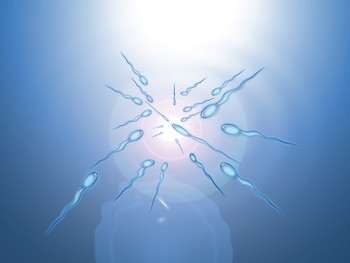Site Under Development, Content Population and SEO, Soft Launch 1st January 2020
Sperm is the male reproductive cell in vertebrates. The term is derived from the Greek word "sperma" meaning "seed". Sperm were first observed under a microscope in 1677 by Antonie van Leeuwenhoek who described them as little animals or animalcules.
Each human cell contains 23 pairs of chromosomes. These undergo division in a process called mitosis. Mitosis produces daughter cells that contain 23 pairs of chromosomes, one one half of which is inherited from the mother and the other from the father.
For this purpose, the male and female reproductive cells or gametes need to undergo another form of cell division called meiosis where the cell is divided into cell generated contains only 23 or half of the 46 chromosomes. The gamete cells are the eggs or ova found in females and the sperm found in males. The termed used to describe these cells containing only half the total chromosme number is "haploid".

When the sperm has the usual single flagellum (or "tail"), it is called a spermatozoon and may be described as uniflagellate. The flagellum moves in a whip-like manner, propelling the the sperm towards the egg and uniflagellated sperm are also termed motile sperm.
A non-motile sperm that lacks a flagellum is called a spermatium. A sperm may contain an X chromosome and produce female off spring after fertilizing the ovum or it may have a Y chromosome, in which case fertilization will lead to the development of male offspring.
The sperm consists of a head that is about 5 µm by 3 µm in size and a flagellum of around 50 μm in length. There is little cytoplasm in sperm and the "head" is densely packed with DNA. Sperm is released from the male in a fluid called semen. Semen is alkaline and does not allow the sperm to be completely motile until they reach the female reproductive tract or the vagina which is acidic in pH.